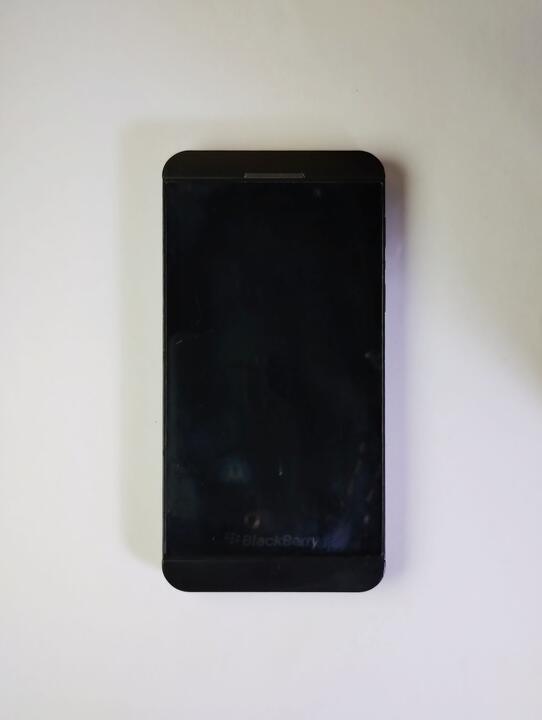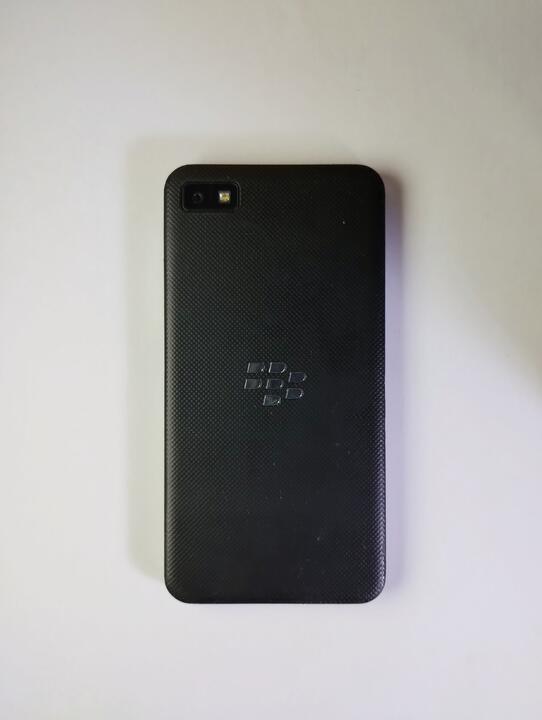Blackberry Z10
Status: 🟢 fully functional
Specs
- Launch date: 2013, January. Released 2013, January
- Software platform: BlackBerry OS 10 (based on QNX), upgradable to 10.3.1
- Display: 768 x 1280 pixels, 5:3 ratio (~355 ppi density), TFT
- CPU and Memory: Qualcomm MSM8960 Snapdragon S4 Plus, Dual-core 1.5 GHz Krait, 16GB 2GB RAM
- Connectivity:
- Cellular: GSM 850 / 900 / 1800 / 1900 - all versions, HSDPA 850 / 900 / 1900 / 2100 - STL100-1
- WLAN: Wi-Fi 802.11 a/b/g/n, dual-band, DLNA, hotspot
- Bluetooth: 4.0, A2DP, LE
- Positioning: GPS
- Radio: No
- USB: microUSB 2.0
- External storage: microSDXC (dedicated slot)
- Camera(s): Main: 8 MP, f/2.2, 31mm (standard), AF, Secondary: 2 MP
- Other notable features: HDMI port
- Battery: Li-Ion 1800 mAh, removable
- Dimensions & Weight: 130 x 65.6 x 9 mm (5.12 x 2.58 x 0.35 in), 137.5 g (4.83 oz)
- Source: GSMArena.com
The BlackBerry Z10 wasn’t just another attempt to catch a departing train — it was a bold leap toward a new paradigm. At its core beat QNX, a real-time operating system once used in automotive electronics, medical equipment, and other mission-critical systems. On that foundation, RIM built BlackBerry OS 10, a platform with an entirely new philosophy: no “Home” or “Back” buttons — interface navigation was entirely gesture-based. It felt like magic: swipe up from the bottom to open the home screen, swipe right to peek into the BlackBerry Hub. What later made its way into Android and iOS was already here from the start in 2013.

I’ll admit, I followed the fate of the Z10 on YouTube with barely concealed excitement — by then you could watch in detail how everything worked. I wanted to believe RIM could wedge itself into the Apple–Google duopoly, bring back variety, and restore real technological competition. But, as usual, developer enthusiasm proved too weak: few were willing to learn yet another SDK and overhaul their workflow for the sake of a third platform. RIM was forced to add Android app support, which marked the beginning of the end. Originality gave way to compatibility — and that rarely ends well.
Still, the Z10 remains in memory as an example that things could be done differently — and that “differently” actually worked. It didn’t boast crazy specs, but it had the spirit of engineering exploration, it had uniqueness. Sure, its screen wasn’t the biggest, its camera wasn’t the best, and its battery wasn’t endless. But every movement, every gesture, was an attempt to bring magic back into mobile technology. An attempt worthy of respect.
🇺🇦 HELP US HELP OTHERS, SAVE ANIMALS IN UKRAINE
Site map | Powered by crew | © 2025 TiredSysadmin
All photos from Vintage Cellphone and PDA Museum by TiredSysadmin are licensed under Creative Commons Attribution-NonCommercial-ShareAlike 4.0 International.

